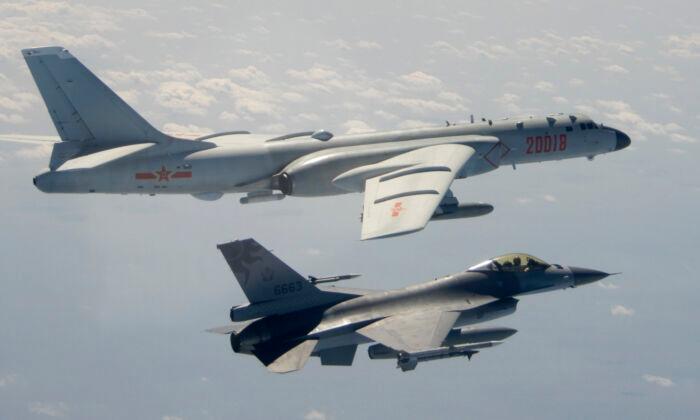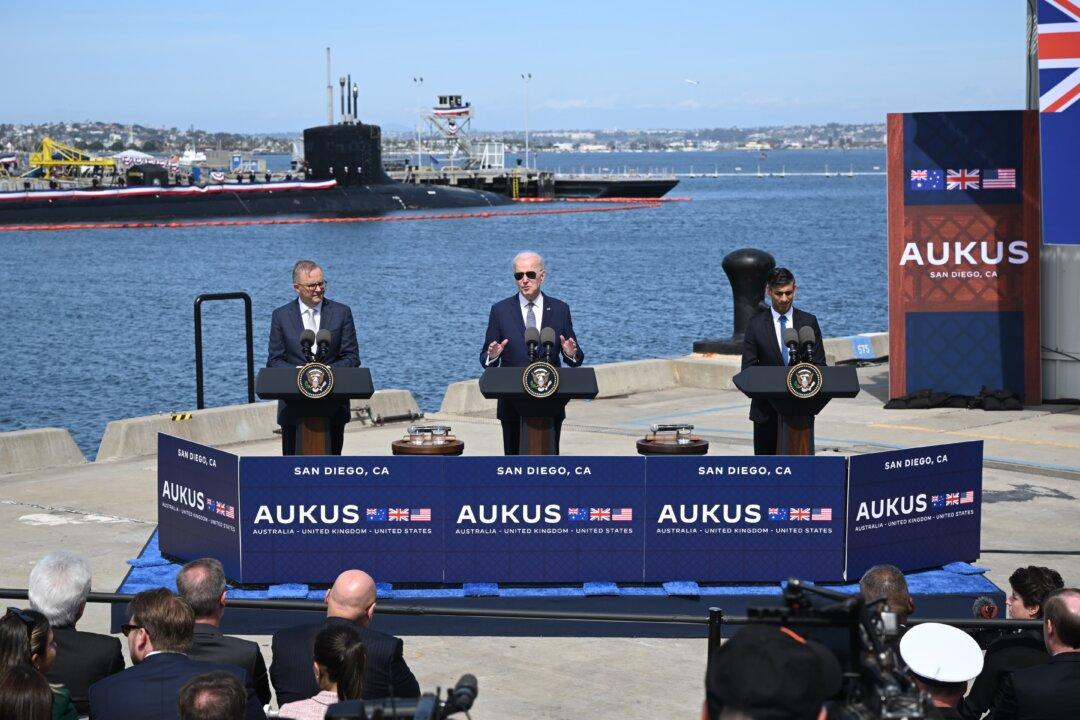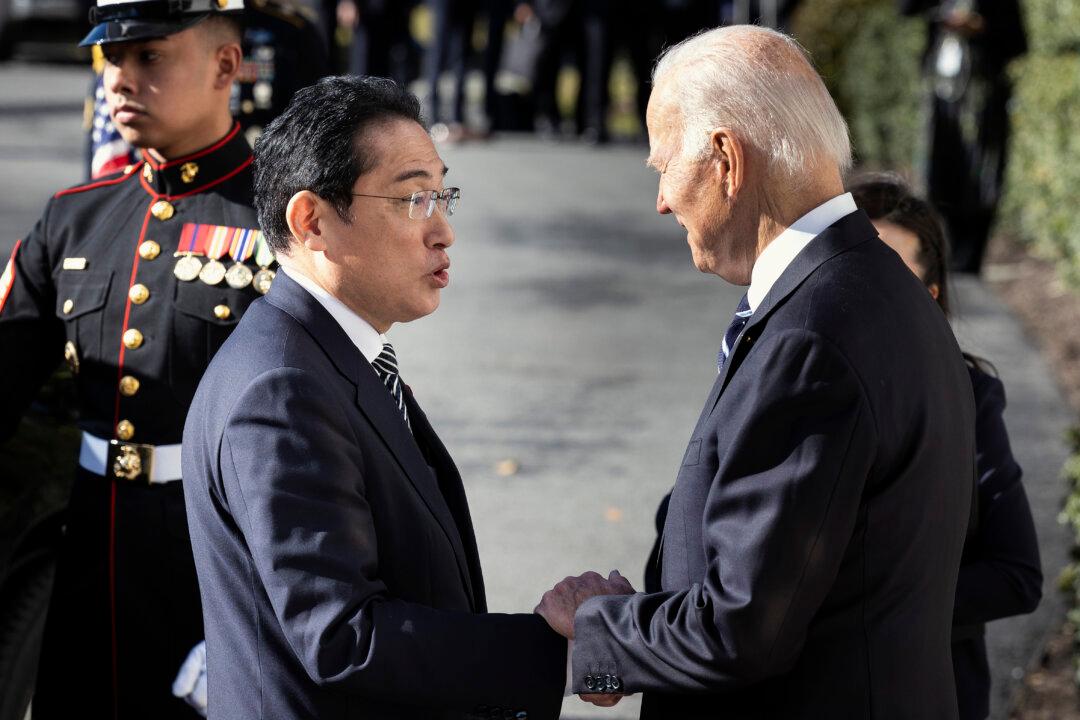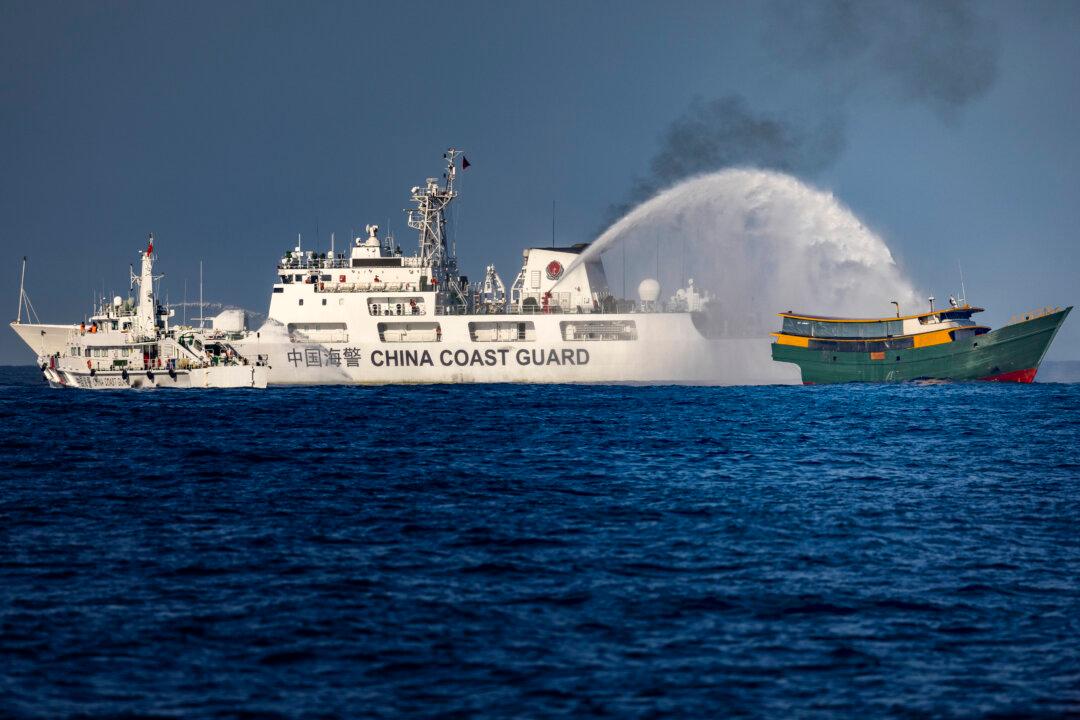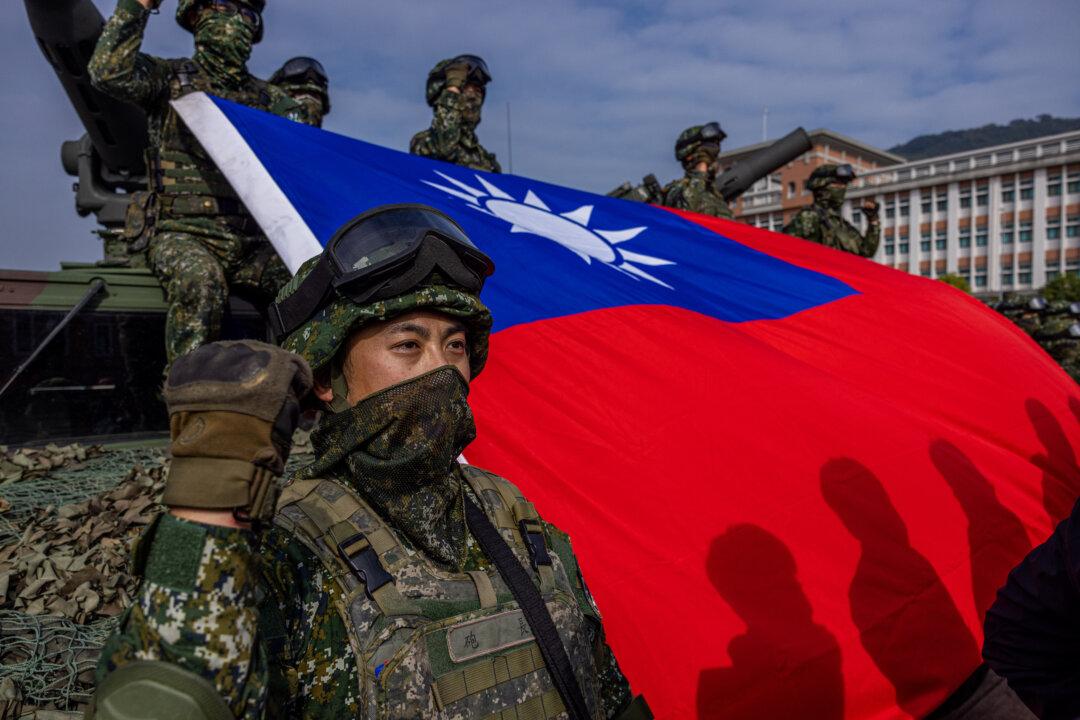Over the last week or so, Beijing sent about 150 military aircraft—bombers, fighters, reconnaissance, and anti-submarine planes—through Taiwan’s air defense identification zone (ADIZ). An ADIZ is not legally Taiwan’s territory, but Taipei does claim authority to monitor and control what flies through it.
Chinese People’s Liberation Army (PLA) planes regularly intrude on Taiwan’s ADIZ, but this time the numbers were more than ever before. And the mix of aircraft was similar to what one would use in combat operations.
Improving PLA Capabilities
Xi Jinping means it when he says he will seize Taiwan—either via intimidation or outright force. The PLA, in fact, had its marching orders for decades—long before Xi came along: Prepare to take Taiwan and to defeat American forces. Major elements of the PLA’s training, weapons, and operational development have been specifically designed for these tasks. Over the last 15 years or so, the PLA has markedly improved its capabilities for an invasion or armed attack on Taiwan—and it thinks it might succeed.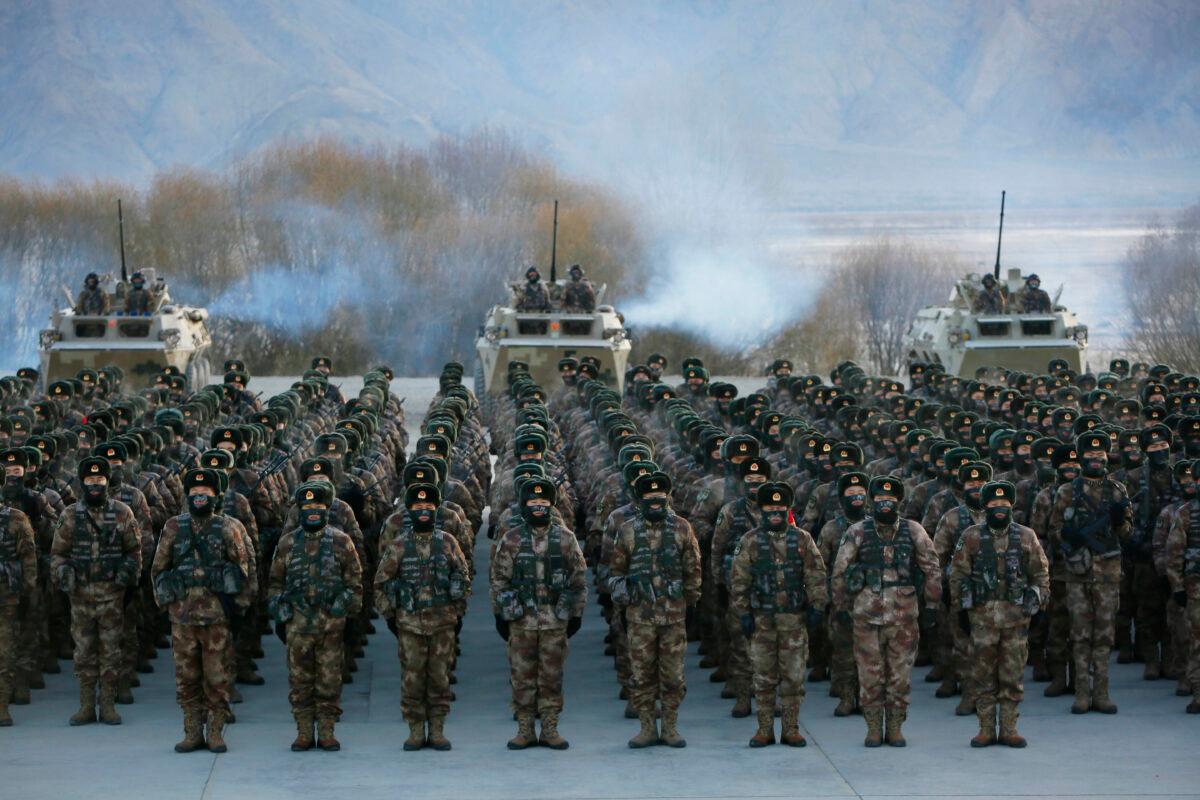
• These drills are good real world practice for the PLA air forces—and are taking place in the area they intend to fight.
• The People’s Republic of China (PRC) is terrorizing Taiwan and wearing down its defenses, while also numbing people in Taiwan (and Washington) to the idea of PLA aircraft routinely flying near Taiwan. This is also helpful for getting a sense of Taiwanese responses and gaining surprise on the day that Beijing decides to pull the trigger.
• Xi is sizing up not just Taiwan’s response, but also the United States, Japan, and other free nations’ responses—both operational and political—to Chinese aggression against Taiwan. One long-time observer notes that “these aerial incursions ... give the PLA the opportunity to measure and evaluate the aggregate Taiwan-U.S. defense umbrella performance … [it’s] a tabletop exercise in real-time, 3D, to assess certain capabilities of the Taiwan-U.S. defense umbrella.”
• Beijing often sends out the PLA Air Force and Navy in response to events it finds irksome such as the recent U.S., Japan, UK, Netherlands, New Zealand, and Canada high-profile naval joint exercises in the Philippine Sea that included three aircraft carriers. The arrival of French politicians and former Australian Prime Minster Tony Abbott in Taipei no doubt displeased Beijing, as did the AUKUS agreement between the Americans, Australians, and the British. This allows Beijing to blame the actions of others for aggressive acts it would be conducting regardless.
Implications of the ‘Convenient Distraction’ Argument
China is experiencing some real problems that have built up cumulatively and make the Chinese Communist Party (CCP) look inept. The recent widespread power outages, for example, are a huge embarrassment—not least since China had to relax its ban on Australian coal to deal with it. The Evergrande property company’s collapse is another headache for Zhongnanhai.And remember that for all the shiny skyscrapers in Shenzhen and Shanghai, about 600 million Chinese still live on about $5 a day. Creating external distractions and stoking up the nationalist mob are a standard feature of these sorts of dictatorial regimes. Not all that different from the Argentine junta that picked a fight with Britain over the Falkland Islands in 1982 while Argentina’s economy was going down the tubes.
What It Means That the Chinese Flights Were in Taiwan’s ADIZ Rather Than Its ‘Legal’ Airspace
The PLA flights took place down toward the southern end of the ADIZ—between Formosa and the Pratas Island—but closer to the Pratas. Some of the aircraft flew partway up the east side of Taiwan as well.Flying down at the southern end of the ADIZ is not the same as flying closer to Formosa—or into Taiwan’s legal airspace—or over Taiwan itself. This was a conscious decision by Beijing—and many analysts and commentators claim this demonstrates that Xi is keen not to go too far.
However, the inestimable China analyst, Richard Fisher, properly notes that while the PLA aircraft may not have violated Taiwan’s actual legal airspace, “the weapons they carry certainly can and are the real factor in any measurement of intimidation.”
He correctly points out, for example, that the Chinese bombers involved in the flights carry long-range missiles that can cover all of Taiwan. And Chinese fighters’ air-to-air missiles are no less formidable, possibly outranging Taiwan Air Force fighters’ comparable missiles. Thus, one should note that PRC aircraft can cause plenty of trouble even from a distance.
Another analyst points out that while the flights took place in the southern part of Taiwan’s ADIZ and over the South China Sea, that quite possibly owes to the fact that none of the nearby nations will interfere. But try to harass Taiwan from north of Taiwan and the PLA will find itself confronting American and Japanese forces.
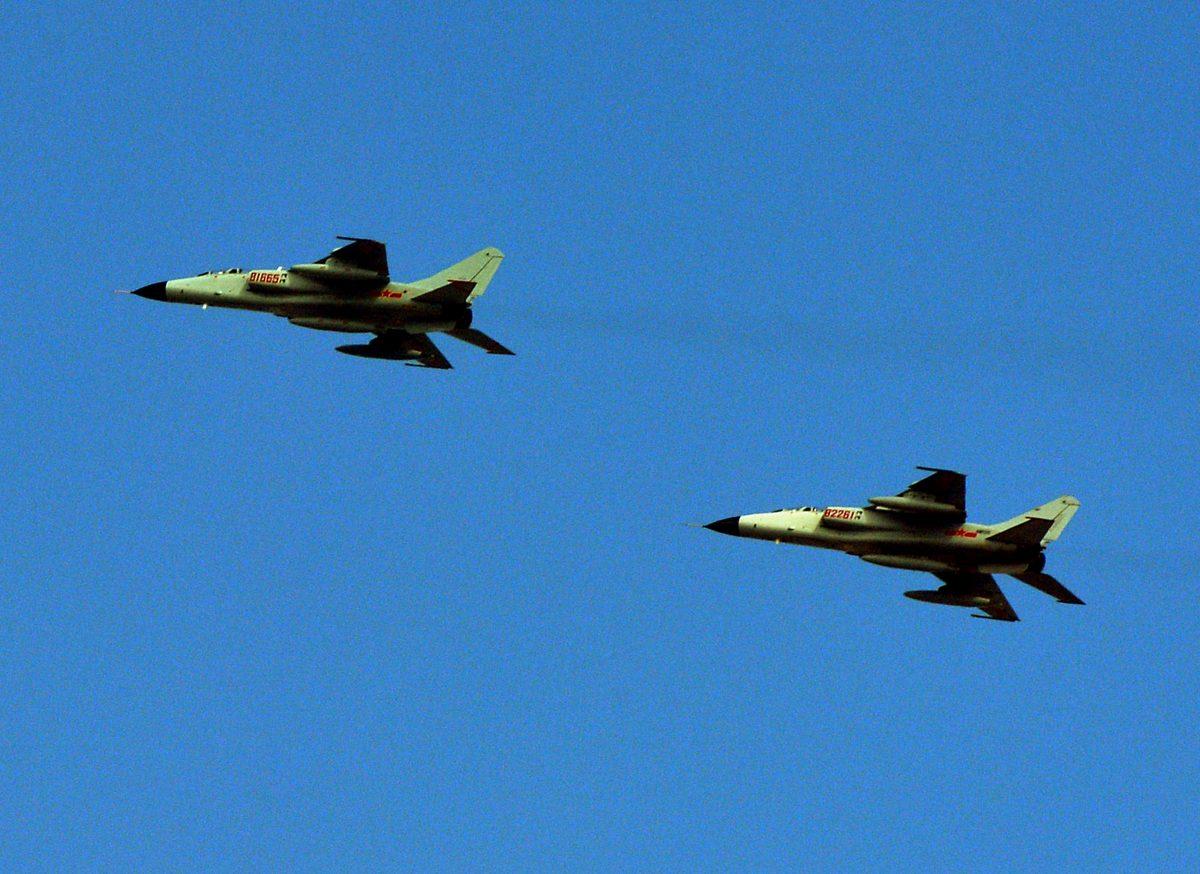
Eventually, Chinese aircraft will move closer and closer to Taiwan, and will one day (probably in the not too distant future) overfly Taiwanese territory—and dare Taiwan to shoot—and for Washington to do something about it.
Risk of an Accident Leading to War
It is possible that an accident, such as a mid-air collision or a pilot with an itchy trigger finger, could spiral into larger conflict. But that spiral will happen only if Beijing wants it to.The Bottom Line
One ought to be very worried. Not that an attack will happen tomorrow, but that the PRC is on the move and intending to get what it wants by force. It’s been a while, not since the 1940s, that the free world had to face a major power that was looking to conquer territory—and democracy at that—and overtly incorporate it into a fascist dictatorship.Some observers claim such fears are overblown and the PLA lacks the capability to take Taiwan. They argue that the Chinese military has not done the complex exercises necessary to conduct a full-scale invasion and thus cannot—and presumably will not—have a go at Taiwan.
That may or may not be so, but one notes that the Taliban were beturbaned tribesmen with AK-47s, RPGs, and pickup trucks—and a 12th century view of human society. Yet, they did pretty well against the world’s most powerful military—in part because of Washington’s lack of willingness to appreciate and counter the threat. The PLA does have problems. Every military does. But you underestimate the Chinese at your own risk.
This latest move by the PRC against Taiwan may have been a stunt of sorts but, even so, it is dangerous. It is saying: We want Taiwan. We are equipping and training to take Taiwan. We don’t care who knows it. What are you going to do about it?
Expand the mental aperture and look out a few years, and there is good reason to worry about what is coming. Team Biden hopefully understands this.
